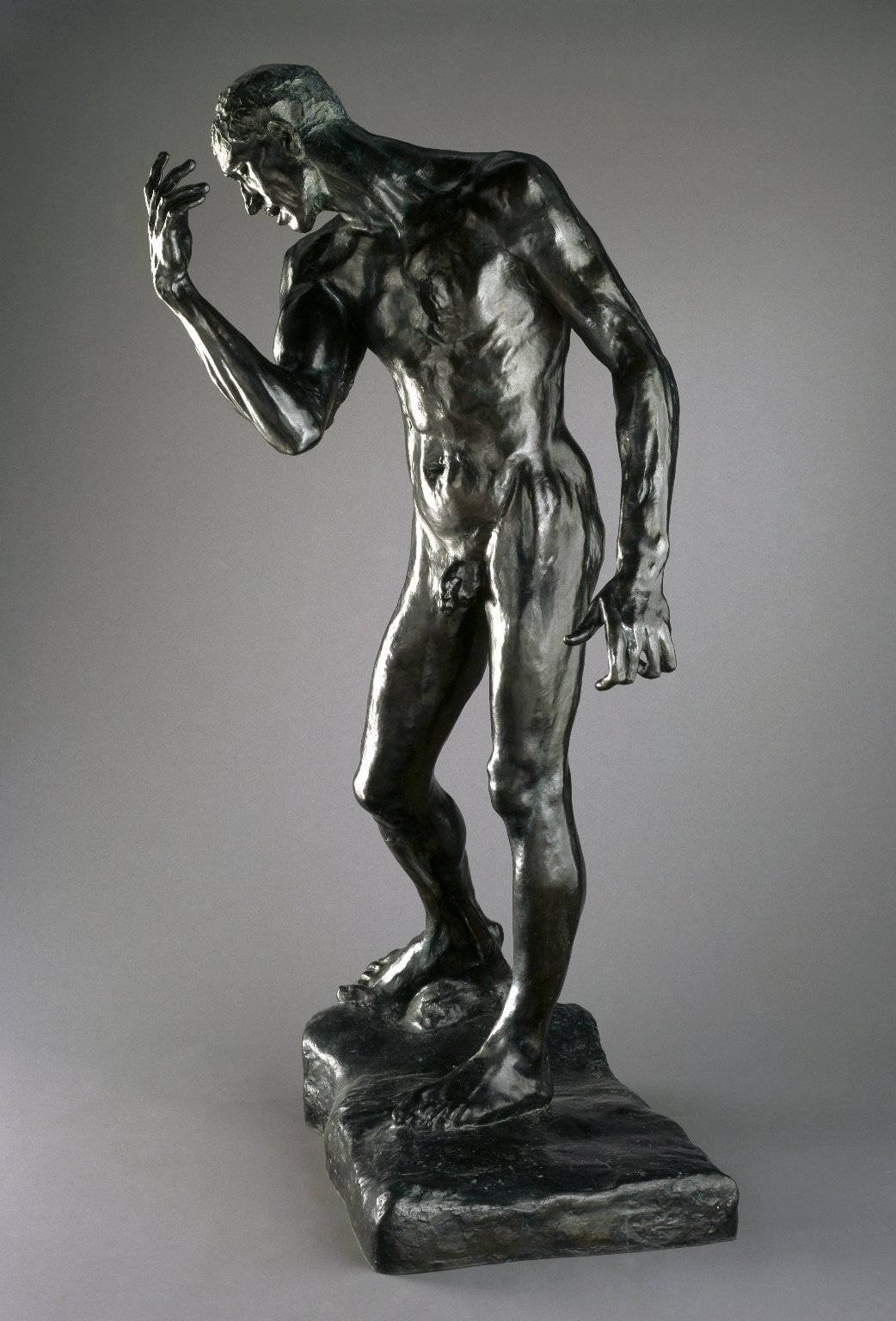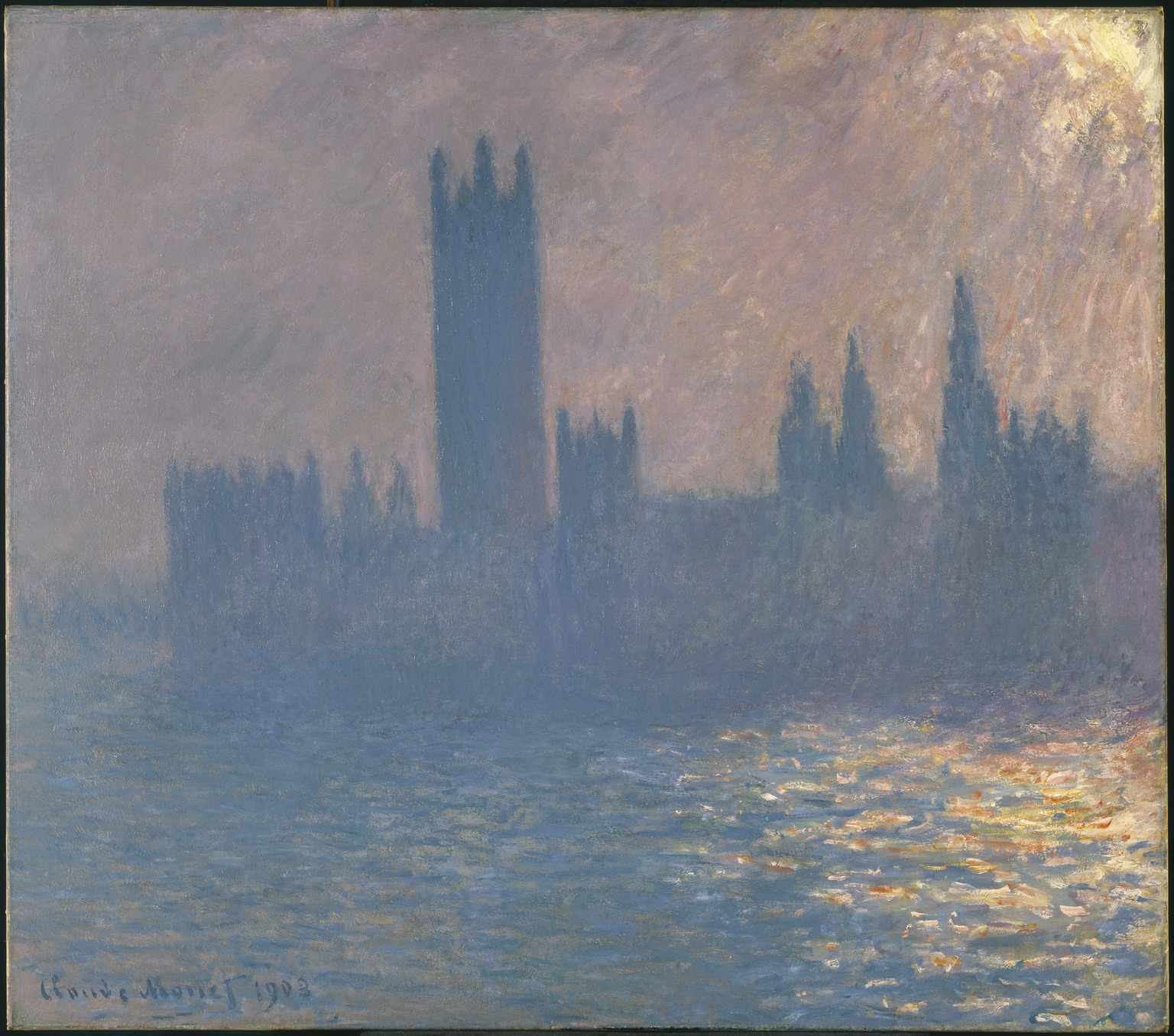The Tour at the Brooklyn Museum
Last week, we had a tour at the Brooklyn Museum, and it really
impressed me because I saw many autographs that we learned in the textbook, and
I was really interested in the following three. They are Sazai hall - Temple of Five Hundred Rakan by Hokusai, Pierre de Wiessant, Monumental Nude by Auguste Rodin, and Houses of Parliament, Sunlight Effect by Claude Monet.
 |
| Sazai hall - Temple of Five Hundred RakanKatsushika Hokusai 1832 |
First, let us have a look at Sazai hall - Temple of Five Hundred Rakan, and it was a part of Thirty-six Views of Mount Fuji, and it was created by Hokusai. Although it was not famous as The Great Wave, it was still worthful for us to have an in-depth discussion. For the subject, we can find there are three layers of view; the closer one was that people took a view of the Fuji and people had a rest on the floor; the middle one was the view of the lake; the farther one was the view of the Fuji. The three layers of view created a peaceful scene, and it attracted many people to have a trip to Tokyo. Then, for the composition, we can find that Hokusai used the linear perspective, which was learned from European arts because of the Western colonists and trades. From the floor and the roof and the direction of people’s sights, we can see they were all focused at the Fuji, which was the vanishing point, and this was the new way that Hokusai created in Ukiyo-e.
 |
| Pierre de Wiessant, Monumental Nude
Auguste Rodin
1886, cast 1983
|
Then, for the Pierre de Wiessant, Monumental Nude, it was a part of The Burghers of Calais by Auguste Rodin, and it embodied the realism though Rodin lived in the years that impressionism was the mainstream. This sculpture depicted that the city of Calais had been under siege by the English, and the English king commanded six prominent citizens to die for the withdrawal. Although the Queen released these six citizens, Rodin still chose to show the scene that they were waiting to be executed. From the emotion on the face, we can see that he was anguished and suffering; from the contorted gesture, we can find he was thinking about his death and sacrifice. Rodin did not create him as a hero, but he chose to depict him as a person from the lowest level of the society, and he was the man who fought against the dominant side, which could embody the realism.
 |
| Houses of Parliament, Sunlight EffectClaude Monet 1903 |
Last but not least, let us have a look at Houses of Parliament, Sunlight Effect, which is an impressionist painting by Claude Monet. Monet was the leader of impressionism, and he focused on the light effect at a particular moment, which might be the reason that the subject matters were the same for many paintings but with different light effects, which was quite different from the Renaissance paintings. This painting was one of the nineteen Houses of Parliament, and we can find that Monet weakened the details of the architecture, but he focused on the sunlight and the reflection in the water. Monet captured the fleeting moment of the light effect, and he made the parliament partly hidden and partly visible, which is just like Stokstad and Cothren commented, “He records the ephemeral play of reflected light and color and its effect on the eye, rather than describing the physical substance of forms and the spatial volumes they occupy” (Stokstad and Cothren 1003).
Work Cited
Stokstad, Marilyn,
and Michael Watt Cothren. Art
History. Sixth ed., II, Pearson,
2018.
No comments:
Post a Comment